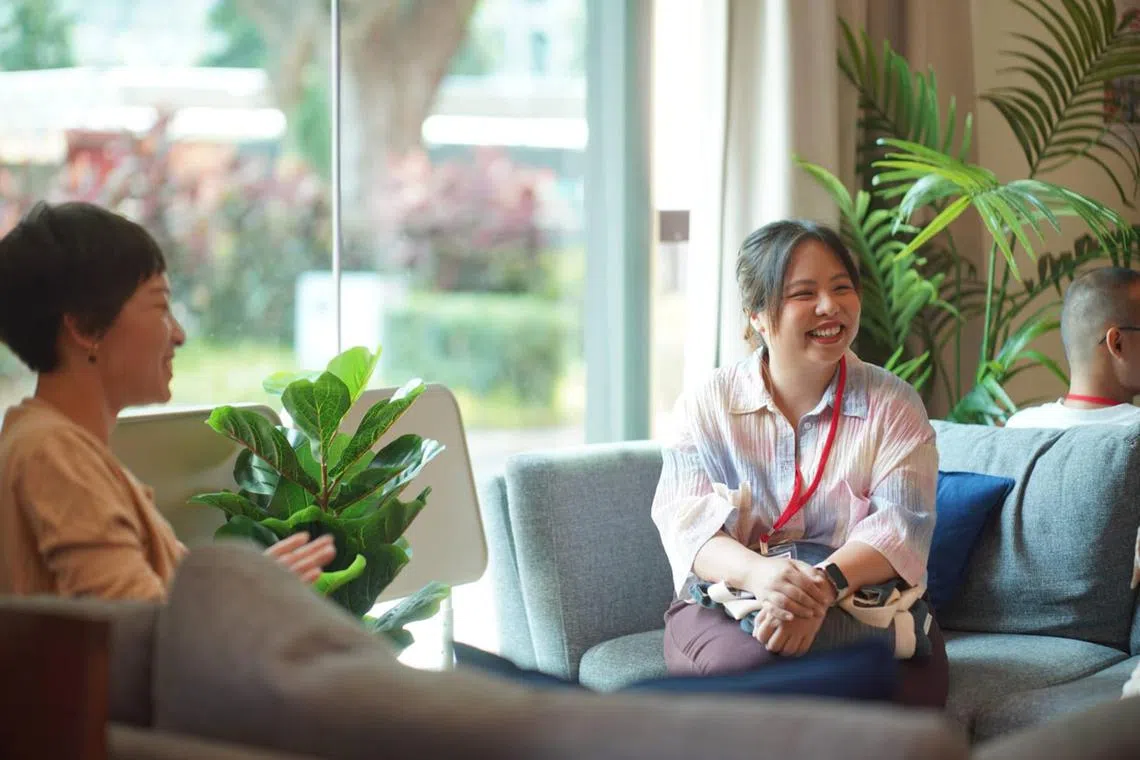Newer treatment alternatives help patients to fight war against autoimmune diseases
Sign up now: Get ST's newsletters delivered to your inbox

Ms Nicole Chan, 33, was told she had rheumatoid arthritis after visiting a specialist in October 2016.
PHOTO: COURTESY OF NICOLE CHAN
Follow topic:
SINGAPORE – It began with sporadic pain in her knees and then her jaw in 2016. Three months later, Ms Nicole Chan was barely able to walk and perform tasks such as dressing herself.
She was told she had rheumatoid arthritis after visiting a specialist at Singapore General Hospital (SGH) in October that year.
Rheumatoid arthritis is an autoimmune and inflammatory disease where the patient’s immune system attacks healthy cells in the body by mistake, causing pain, swelling and stiffness in the affected parts.
The pain can last for hours and affect patients’ daily activities and overall well-being.
Over 600,000 people in Singapore, or about 11 per cent of the population, suffer from one of several known autoimmune diseases.
Some patients even go years without getting a proper diagnosis, but the availability of a wider range of new treatments is now proving a boon to sufferers.
Ms Chan, 33, a community manager for a non-profit organisation, was initially prescribed a combination of steroids, non-steroidal anti-inflammatory drugs and disease-modifying anti-rheumatic drugs to manage her symptoms.
But the adverse side effects she experienced resulted in a switch to Janus kinase (JAK) inhibitors in November 2019.
“I experienced severe nausea, digestive issues and hair loss. I still have PTSD (post-traumatic stress disorder) from taking methotrexate – seeing the yellow pill or the liquid triggers nausea,” said Ms Chan, referring to the medication she was previously taking.
JAK inhibitors are one of the newer forms of treatment, with the drugs used for inflammatory conditions such as rheumatoid arthritis and ankylosing spondylitis.
The drug interferes with signals in the body that are thought to cause inflammation, in turn preventing joint damage by calming the overactive immune system.
“Each year, we see approximately 80 to 140 newly diagnosed patients with ankylosing spondylitis and 150 to 200 newly diagnosed patients with rheumatoid arthritis,” said Dr Charmaine Wang, associate consultant for rheumatology and immunology at SGH.
She said ankylosing spondylitis, which is an inflammatory condition mainly affecting the spine, more commonly affects the younger age group, with men at higher risk than women.
Rheumatoid arthritis affects women two to three times more than men and can occur at any age but typically starts between the ages of 25 and 45.

Ms Nicole Chan was barely able to walk and perform tasks such as dressing herself.
PHOTO: COURTESY OF NICOLE CHAN
The number of treatments available has increased with huge advancements in immunology over the last 20 years.
Currently, tofacitinib, upadacitinib and baricitinib are three JAK inhibitors that are locally approved and used in hospitals.
Ms Chan, who is currently on Xeljanz, a type of tofacitinib, said her symptoms are now almost non-existent and she is able to do light exercises.
“I do experience the symptoms sometimes, but I no longer wake up stiff. Before JAK inhibitors, my pain level would be seven or eight most days, sometimes I would be bedridden. After the treatment, it is at one or two.”
Adjunct Associate Professor Manjari Lahiri, a senior consultant in the division of rheumatology at National University Hospital, said JAK inhibitors are effective in reducing symptoms and inflammation as well as slowing joint damage, either when used alone or in combination with methotrexate.
Their main advantage is a rapid onset of action, with the effect kicking in within days.
“Which drug is right for which patient depends on several factors, such as efficacy, cost, patient preference and patient profile. The final choice should always be a shared decision between the patient and the treating physician,” she added.

Ms Nicole Chan, who is currently on Xeljanz, a type of tofacitinib, said her symptoms are almost non-existent and she is now able to do light exercises.
PHOTO: PFIZER
Although there is currently no cure for conditions such as ankylosing spondylitis and rheumatoid arthritis, physicians often encourage patients to tap non-pharmacological forms of therapy such as physiotherapy and regular exercise in tandem with medicine to improve and maintain joint flexibility and overall mobility.
Ms Chan regularly visits traditional Chinese medicine physicians for meridian massages and fire cupping, which have helped to reduce ankle joint inflammation.
“There are people around fighting an invisible battle against autoimmune diseases,” she said. “I hope that society as a whole will have a greater awareness of such conditions and be kind always.”

